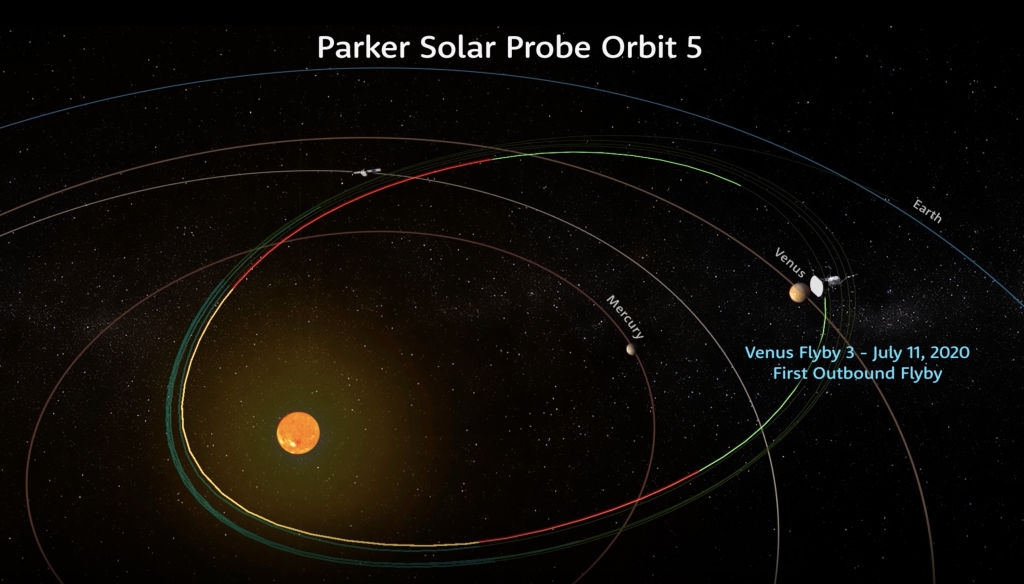Coming off its fifth encounter with the Sun — and the mission’s longest observation campaign yet — Parker Solar Probe is now headed toward Venus.
Early on July 11, 2020 (UTC), the spacecraft will perform its first outbound flyby of Venus, passing approximately 516 miles above the surface as it curves around the planet. Such Venus gravity assists play an integral role in the Parker Solar Probe mission. The spacecraft relies on the planet to rid itself of orbital energy, which in turn allows it to travel ever closer to the Sun after each Venus flyby. The mission’s previous two Venus flybys swooped past the Sun-facing side of the planet, and this will be Parker Solar Probe’s first pass on Venus’ night side.

Parker Solar Probe will witness a brief 11-minute solar eclipse during the maneuver while passing through the shadow of the planet. Utilizing powerful telescopes, the Apache Point Observatory in New Mexico, Lick Observatory in California, and the Keck Observatory in Hawaii will search for Venus aurora from the ground in coordination with Parker Solar Probe’s pass around the planet, weather permitting. Scientists will combine these ground-based observations with data collected by Parker Solar Probe during the flyby to take an unprecedented look at the interactions between Venus and the solar wind.
This Venus flyby sets Parker Solar Probe up for its sixth close pass by the Sun, slated for September 27. During this perihelion, Parker Solar Probe will travel even closer to the Sun, setting a new record when it passes approximately 8.3 million miles from the solar surface, more than 3 million miles closer than the previous perihelion at 11.6 million miles from the solar surface. The spacecraft’s seventh perihelion is slated for January 17, 2021.
By Justyna Surowiec
Johns Hopkins University Applied Physics Lab
